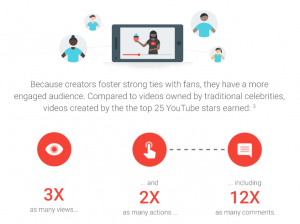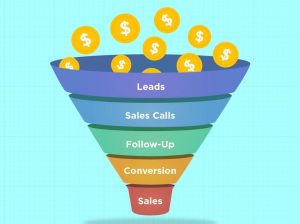Brands are forever trying to find their way on Facebook and it really isn’t as hard as it might at first seem. But it is easy to flounder after a little bit of success.
With organic reach suffering somewhat on the platform, brands are looking for the next big direction to go in.
And you know what? It may actually be Facebook Groups. That’s right, that thing you kind of didn’t realise had any value is now starting to creep very much into the value zone.
Like any group platform, there are clear caveats. But these are quite easy to accommodate with a little planning and a focus on value.
First let’s take a look at some of the reasons why your brand should be using groups.

The era of Small Social
Group chats are not only about Slack. Facebook groups are growing in popularity and the active user growth is outpacing Facebook’s as a whole. Here’s some data: “More than 925 million people now use the product each month — a number previously unreleased — up from 850 million just three months ago. And about 60% of Facebook’s monthly active users are also Groups monthly active users, up from around 40% two years ago.”
Facebook is doing a lot to surface groups to their users through recommendations and search:
“Facebook, Cathcart said, uses what’s called “collaborative filtering,” a recommendation system similar to Amazon’s related products suggestions which suggests groups based on signals you might not find intuitive. There’s also some good ol’-fashioned growth hacking involved. Facebook, for instance, will use its own ad inventory to promote groups to certain demographics, like study groups to students; it’s added a “Create Group” option to multi-person messaging; and it will prompt people to create groups when it sees certain events — an engagement might prompt a bachelor party group, for example.”
The value in groups for brands
If we were to look at the key reason why Groups are so effective for brands it’s basically all about targeting. You can do true ‘invite-only’ stuff with groups, therefore making it easier for you to effectively market to a specific group of people (see what we did there?).
This targeted marketing simply means that you can effectively run a virtual segmented mailshot, or sell to certain people that would be more likely to snap up a niche product or service.
They are a great place to add value in communication too. If you spend time on the group aspect selling your stuff from morning until night, you can kiss goodbye to engagement. But if you work on engaging with a group and asking questions as well as giving answers you’re in with a chance.
And if you generally try and have a conversation with the people in groups, you’re building engagement. And who knows, those people may then head to your fan page or website. The more visible and positive you are in Facebook groups, the more likely people will come check you out.
There is also arguably more visibility in groups than there is pages. You could have more of a chance of getting seen and engaged with if you utilise groups more. We suggest putting in an extra 25% worth of work in your groups conversations and posting and then testing how much engagement you get. How does your group engagement compare to your page engagement?
Other benefits are there too. You can send mass messages for example, and this has real value for any brand that needs to communicate with it’s fans. Let’s say you have a big event coming up, or even just a sale. You can easily send out a mass message to your group members and therefore keep up that powerful connection that a solid brand requires.
The communication is further facilitated by the unique crowdsourcing aspect of groups. Let’s say you have an idea for a new product that you want to get some feedback on that day. You can spend money on a focus group, or use your own focus group on Facebook. Ask questions in your group about the new direction, and watch as the answers pour in. This way you are crowdsourcing the birth of a new product, and it hasn’t cost you a penny.
How to use Facebook groups
Okay, so we’ve looked at the value in Facebook groups for your brand, but how do you use them effectively? Let’s take a quick look at how you can use the tool to boost that engagement.
Create a group to build in exclusivity
Everyone likes to be part of a special group. There’s nothing better than feeling like you’re special, and that you have a bit of exclusivity. The best brands know this, and create groups that are made up of customers in a certain segment. This can be as simple as creating a group and inviting only the people who bought one of your products that you sell.
It can also mean picking out a certain demographic and creating a group around them. We don’t mean singling people out because they’re older necessarily (but that could work), but instead focusing on clear segmentation. Choosing to create a group that has a particular interest can build in exclusivity. It’s all good.
This allows you to make them feel special, and therefore makes your brand more powerful.
Build value
If you’re good at this, it can provide immense long-term value for your brand. Simply create a group that discusses a certain aspect of your product or market that is important to them. If you sell baby clothing, create a group about breastfeeding for example. This shows you care about your customers, and it will develop huge levels of value for them.
If they want to moan about the difficulties about finding a place to feed in public and you have a platform for it, they will be grateful. It’s giving them a chance to talk, discuss and connect. And it means that you are simply developing a brand image of trust and communication.
Develop killer customer support
This is a bit of an easy one, but many brands choose to ignore it. Customer support has now almost exclusively shifted online for many companies, and Facebook groups, as an alternative to Facebook pages, could be a great way to nail it.
The main aim here is to create a group that allows your customers to ask any questions about your products that they need to. The fact that groups are closed and the content won’t show up in their friend’s newsfeed means it is a sensible and appropriate place to use for customer support.
Grab one of your best team members and make them responsible for managing questions. You can also maintain a FAQ section in the group too, so that you are always on top of the current usage of your products and services. It’s live and it’s dynamic.
Develop a real marketing list
If you work hard at your groups over time, and you don’t come across as spammy (not that difficult to do, when you think about it) you can start to encourage people to give you their contact details. And guess what? They’ll do it. Willingly.
Bringing people together with a shared interest as the anchor means that trust builds quickly. This allows you to comfortably ask for contact details because the topic they are discussing is compelling, and means something.
Taking on Facebook groups as a branding tool is not about just jumping in and hoping it will all click. Instead, you’ve got to think about the aims of your campaign and how they can be best served by the platform. Take it slow, focus on communicating with customers, and aim to develop loyalty and connection. And you should be fine.
Digital & Social Articles on Business 2 Community(37)









